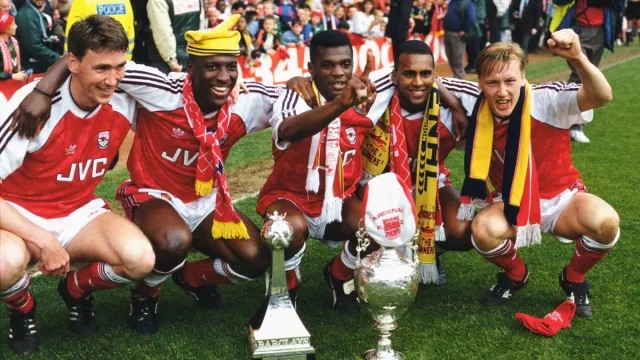 From the rise of Paul Davis and those who stood on his shoulders, Arsenal have developed a special relationship with north London's black community
From the rise of Paul Davis and those who stood on his shoulders, Arsenal have developed a special relationship with north London's black community
Arsenal and After’
It was always Arsenal for Paul Davis. He went to watch Chelsea once at Stamford Bridge with his friend and their father, but it was a scary place for a black boy to attend football matches. The National Front distributed flyers outside the ground and groups terrorised black people; he didn’t feel safe. Then Charlie George scored the winner for Arsenal in the 1971 FA Cup final and that was that.
Paul’s mother, Ruby, had arrived in England from Jamaica as part of the Windrush generation. He grew up with her and his sister on a council estate in Stockwell, south London and, by his own admission, wouldn’t have had the money to go and watch games if he wanted to. The closest big clubs were Crystal Palace, Chelsea and Fulham. He always dreamt of Arsenal.
Davis captained his school team and was scouted by Fulham. At the time, kids could train with multiple clubs if logistics allowed. When he was 13 Arsenal spotted him and invited him down to Highbury. As Paul says himself: “That’s where everything began for me.”
These two things are inextricably linked. Arsenal was the London club that first – and most effectively – engaged the black community, creating a legacy that perseveres. If you want to explore that legacy, its origins and its development, you have to speak to Paul Davis.
Back then, Arsenal’s youngest academy players would train in a gym at the back of Highbury. Davis would get the underground from Stockwell, for which the club would reimburse him. As a black child on his own, that journey would be daunting. Highbury, the place he’d longed to go to, was not.
“I remember being made to feel very welcome there, immediately,” says Davis. “I felt at home, which clearly wasn’t the case everywhere in society back then. There was one coach, Alf Fields, who took me under his wing and just made me feel extra special. He made sure that I got my travel expenses and that my kit was all sorted.
“There were no other black players and you tend to seek out people, at that age, who are like you. I did know people from the district teams, but that’s it. But I always felt comfortable in that climate. The club seemed to take care of all of us, but for me that was significant. I didn’t feel any insecurities going into the club at that age.”
